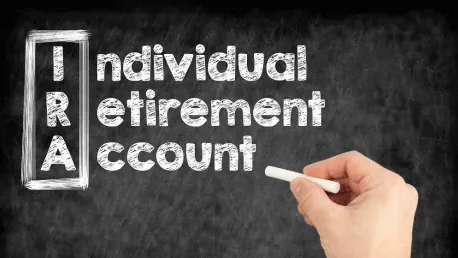When it comes to planning for the future, small business owners and self-employed individuals often face unique challenges in setting up cost-effective and manageable retirement plans. The Simplified Employee Pension (SEP) IRA emerges as an exceptionally beneficial solution, especially designed with these specific needs in mind. This retirement plan not only offers simplicity but also provides significant tax advantages, contributing to its rising popularity among small businesses. With the capability to significantly reduce taxable income and the provision for a tax credit to offset initial startup costs, SEP IRAs present a compelling case for those aiming to create robust retirement savings without the administrative burden typically associated with other retirement plans.
Understanding SEP IRAs and Their Benefits
One of the standout features of SEP IRAs is the ease of establishment, which requires no government filings, making it an ideal choice for small business owners who may not have the resources to manage complex administrative tasks. The flexibility offered to employers in determining annual contributions further enhances the attractiveness of SEP IRAs. Employers can adjust their contribution amounts each year based on the business’s financial health, allowing for more strategic financial planning. Contributions made to a SEP IRA are tax deductible, offering substantial savings by potentially lowering the business’s overall taxable income. In addition to these benefits, businesses can also take advantage of a tax credit up to $500 per year for the first three years, offsetting the cost of setting up the plan.
Another significant advantage of SEP IRAs is their impact on employees’ long-term savings. Contributions made by the employer to the SEP IRA accounts grow on a tax-deferred basis, which means employees do not pay taxes on the funds until they withdraw them upon retirement. This tax deferral can lead to considerable growth over time, enhancing the employees’ retirement savings potential. The simplicity of SEP IRAs also extends to their operation; they do not require the extensive record-keeping and administrative work that other retirement plans may necessitate, significantly reducing the workload for small business owners.
Traditional vs. Roth SEP IRAs
In recent years, a new variant of the traditional SEP IRA has emerged: the Roth SEP IRA. While both plans offer substantial retirement savings opportunities, they differ considerably in their tax treatment and withdrawal rules. Traditional SEP IRAs feature pre-tax contributions from the employer, which are subject to taxation when the employee withdraws the funds. This can be beneficial if the employee expects to be in a lower tax bracket upon retirement, as they can potentially pay less in taxes on the distributions.
On the other hand, Roth SEP IRAs involve post-tax contributions, meaning the employer’s contributions are made with after-tax dollars, but qualified withdrawals in retirement are tax-free. This provides significant tax benefits, especially for employees who anticipate being in the same or a higher tax bracket during retirement. Another critical distinction between the two plans is related to withdrawal penalties. Traditional SEP IRAs impose penalties for early withdrawals, providing a disincentive against accessing the funds prematurely. Conversely, Roth SEP IRAs allow penalty-free withdrawals of contributions at any time, although earnings on those contributions may still be subject to taxes and penalties if withdrawn early.
Steps to Establish a SEP IRA
Establishing a SEP IRA is a straightforward process that involves a few essential steps, ensuring ease for small business owners. First, the employer must execute a written agreement, outlining the terms of the retirement plan. This agreement often utilizes IRS Form 5305-SEP, a simple fill-in document that serves as the official plan. Next, the business owner is required to inform all eligible employees about the SEP IRA plan, detailing how it operates and their rights under the plan. Clear communication ensures that employees understand their benefits and contributions to their retirement savings.
Once the agreement is in place and employees are informed, the final step is setting up individual SEP IRA accounts for each eligible employee. Generally, employees must meet specific eligibility criteria, such as being at least 21 years old, having worked for the employer for at least three of the past five years, and earning a minimum amount of compensation as defined by the plan. This streamlined process makes SEP IRAs one of the most accessible retirement plans for small businesses, allowing them to quickly provide significant retirement benefits to their employees with minimal hassle.
The Appeal of SEP IRAs for Small Business Owners
Planning for the future can be challenging for small business owners and the self-employed when it comes to establishing cost-effective and manageable retirement plans. A Simplified Employee Pension (SEP) IRA is an incredibly advantageous solution catered to these specific needs. This particular retirement plan stands out due to its simplicity and the substantial tax benefits it offers, making it increasingly popular among small businesses. A standout feature of SEP IRAs is their ability to significantly reduce taxable income, providing a clear financial advantage. Additionally, there’s a provision for a tax credit to help offset the initial startup costs, making SEP IRAs an attractive option for those looking to build solid retirement savings. These plans offer a robust savings method without the administrative burdens often associated with other retirement plans. For small business owners and the self-employed aiming to establish a secure financial future, SEP IRAs present a compelling, efficient, and manageable choice.









